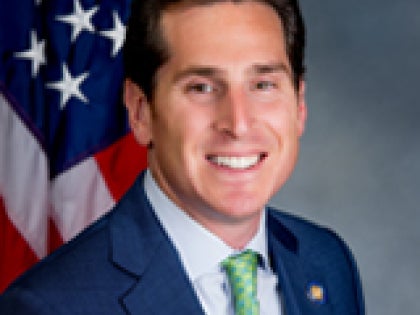
Lawmakers approve state bill to expand LIPA debt
The State Legislature this week passed a bill that will allow LIPA to increase its debt load to $8 billion in a move the utility says could save customers over $600 million and which lawmakers say provides a new layer of financial oversight on LIPA borrowing.
The bill, which goes to Gov. Andrew M. Cuomo, who is expected to sign it, relates to debt under a state entity called the Utility Debt Securitization Authority formed under the LIPA Reform Act of 2013. That authority provided a way for LIPA to refinance upward of $4.5 billion in old debt at considerably lower interest rates for savings of more than $400 million, LIPA said at the time.
The 2013 reform act put a ceiling of $4.5 billion in borrowings. The new bill increases the ceiling to $8 billion under the authority, and requires that if LIPA wants to exceed that amount it come back to the legislature for approval, lawmakers said. The new bill also includes a level of oversight from the state Department of Public Service to make sure any new debt saves ratepayers money, said Assemb. Fred Thiele (I-Sag Harbor), who sponsored the bill along with state Sen. Todd Kaminsky (D-Long Beach).
A spokesman for Cuomo didn't immediately reply to a request for comment. Cuomo had sought a different bill as part of his state budget, but Thiele said lawmakers rejected it because it would have given LIPA the "open-ended" ability to continually refinance debt with "no oversight."
LIPA in a statement said the bill "will allow for additional investments in storm hardening and resiliency while saving customers over $600 million in financing costs."
Asked if the legislation could lead to lower rates for customers, LIPA said, "All reductions in interest payments result in lower revenue requirements for the utility, and thus lower electric rates for customers." The utility noted, however that interest payments represent only around 10% of customer bills.
Thiele said the measure gives LIPA the ability to use the new debt cap for resiliency improvements "at current low interest rates, which makes sense," but he noted LIPA's borrowing will be under a "hard aggregate cap" and not a "moving target which [Cuomo's] revolving cap would have created."
The legislation gives LIPA the flexibility to issue new bonds and to refinance existing bonds under the UDSA, with a limit of around $3.5 billion in new debt.
Borrowing costs under the UDSA are lower because that authority has stronger bond covenants, giving bondholders the assurance they will be paid under almost any circumstance, including the unlikely event that LIPA files for bankruptcy protection.
Kaminsky said he supported the bill because of the new levels of oversight.
"We want them to know we’re watching them closely and are very concerned with what appears to be a lack of oversight there," said Kaminsky, who voted in favor of the measure. "We want LIPA to know if they want to go above the cap we want them to answer questions on the numbers."
LIPA at the end of 2020 had $8.75 billion in long-term debt ($4.695 billion of LIPA debt and $4.061 billion under the UDSA) up from $8.45 billion the year before, according to its 2020 year-end financial report.
